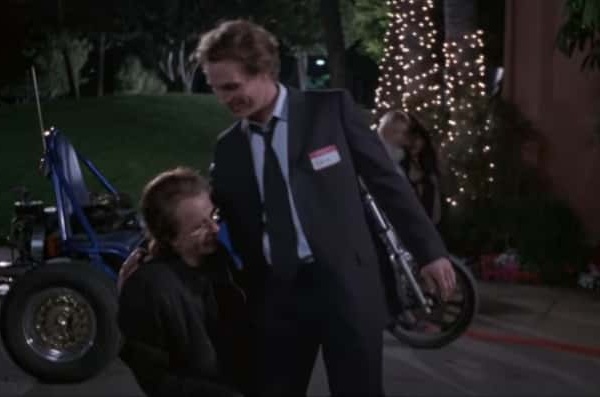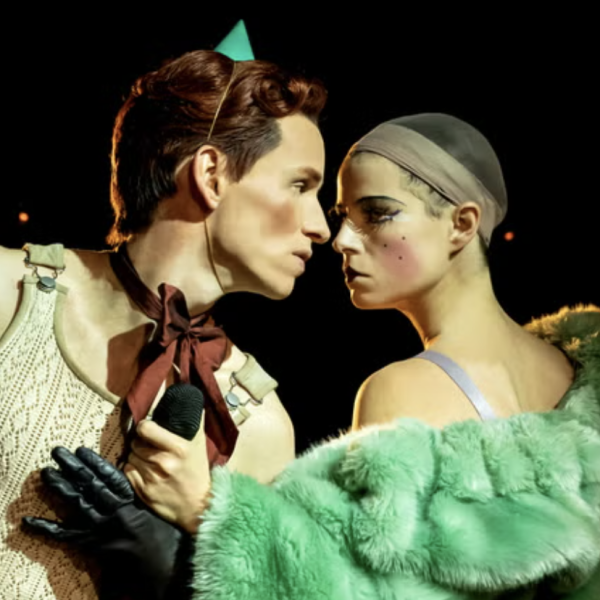
Where “Shrek” eventually scared audiences away with its ever-expanding ensemble and pop culture references culled from current events, “Puss in Boots” streamlines its cast of characters and aims for something more straightforward, in the process not only recapturing the oddball magic of the first two “Shrek” films but the more classical charms of DreamWorks pictures like “How To Train Your Dragon” and “Kung Fu Panda 2.” After juggling too many characters with too few new ideas in “Shrek The Third,” director Chris Miller takes advantage of the opportunity to explore his own world in the Puss-centric spinoff, creating an adventure that’s both cinematic and intimate, never sacrificing sincere emotion for the short-lived glory of a good punch line or set piece.
Antonio Banderas returns to provide the voice of the title character, a swaggering feline bandit who was dropped on the doorstep of an orphanage and raised by the stern but affectionate caretaker Imelda (Constance Marie). Initially shunned by the other kids, he eventually befriends Humpty Dumpty (Zack Galifianakis), a fellow outcast who dreams of finding magic beans. The pair make mischief until Puss rescues an elderly local woman and is branded a hero, but after Humpty unwittingly recruits Puss for a robbery, the two part ways, and Puss becomes a fugitive from the law. Years later, Humpty reaches out to Puss via a cat bandit named Kitty Softpaws (Salma Hayek), and tries to make amends when he announces that he’s found the magic beans he’s been searching for their whole lives. Although he’s skeptical, the two strike a tenuous partnership to steal the beans and use them to clear Puss’ name, hopefully repairing their broken friendship in the process.

Possibly excluding his turn as Robert Ledgard in “The Skin I Live In,” Antonio Banderas hasn’t had any role as memorable as Puss in Boots in more than a decade – which may account for why some seven years after creating the swaggering rogue in “Shrek 2,” Banderas seems as passionate about him as ever. From the opening scene, in which he’s stealing away from a comely feline to whom he’s presumably just given “the business,” Puss manages to dance on the delicate edge of masculine swagger and fuzzy-headed adorableness, both of which he uses to his advantage as he plunders his way through a dusty Mexican landscape. (Miller’s not afraid to use Puss’ dilated-pupil pout for a few “aww” moments, but he manages to give it a grown-up edge as he turns that talent into a Force-like ability to convince anyone to do his bidding.) Thankfully, the film doesn’t merely bounce back and forth between sight gags and set pieces; it actually creates characters dimensionalized in other ways than the film’s expert use of 3D, and Banderas maximizes the comedic, visceral and dramatic opportunities that Puss has to explore.
In fact, the whole cast does a great job creating distinctive, interesting characters who aren’t merely a caricature, or yes, cartoon version of their flesh-and-blood selves. As Kitty, Hayek manages to convey both strength and vulnerability, not the least of which because she’s been declawed – which, if you’re not a cat person, ranks among the worst things you can do to an animal – but she’s a worthy companion for Puss because she isn’t reliant upon him to rescue, save or redeem her. Meanwhile, Galifianakis manages to mostly exorcise the doofus persona he perfected in “The Hangover,” using his familiar, congested delivery to create an anal-retentive taskmaster who’s as intellectually formidable as his egg-shaped body leaves him physically feckless. Billy Bob Thornton and Amy Sedaris round out the principal cast as Jack and Jill, a couple of thieves from whom the trio have to steal the magic beans, and screenwriters Bryan Lynch, David H. Steinberg, Tom Wheeler and Jon Zack give them just enough unique flourishes – like Jack’s inexplicably wholesome determination to start a family – to make them more interesting than cardboard-cutout villains.
Perhaps it’s because he now has his own property unencumbered by preconceptions or too many pre-existing characters, but Chris Miller’s directing seems freer and more agile here than it did in “Shrek The Third,” and he makes brilliant use of not just the third dimension but the first two to create dynamic, exciting and fun scenes that have real energy. For example, the dance-off that introduces Puss to Kitty starts off with very familiar staging – a straightforward back and forth between the two characters – that quickly escalates as the choreography becomes increasingly complex, and he manages to pull it off without sacrificing clarity. And by the time Puss, Kitty and Humpty are bouncing around in the clouds with helium-voiced glee, Miller has fully acclimated audiences to a world where anything is possible, even if it’s often a little weird, and connected us with the characters and story sufficiently for us to both enjoy and emotionally identify with their journey.
Suffice it to say that you’ll probably enjoy the film even more if you’re a cat lover, given its shrewd observations of their behavior; there’s nothing quite as amusing as an anthropomorphized character succumbing to his animal nature, and Miller and co. do a great job of making those moments count. But “Puss in Boots” is a great, and great-looking, little adventure, which requires no prior knowledge of the title character from previous films, and conjures such an intriguing world that neither the filmmakers will ever have to go back to “Shrek” to find more material, nor will the audience have to revisit them to understand it. At the risk of endorsing corporate ambition, DreamWorks has made a film worthy of its own franchise, and one which reflects the company’s evolving maturity as tellers of stories with more substantial shelf lives. Overall, “Puss in Boots” is a fun, beautiful and brilliantly-executed 3D opus, because unlike the last two “Shrek” films, its execution exemplifies the first half of the company’s name, without evoking the crass, machinelike execution of the second. (B+)




